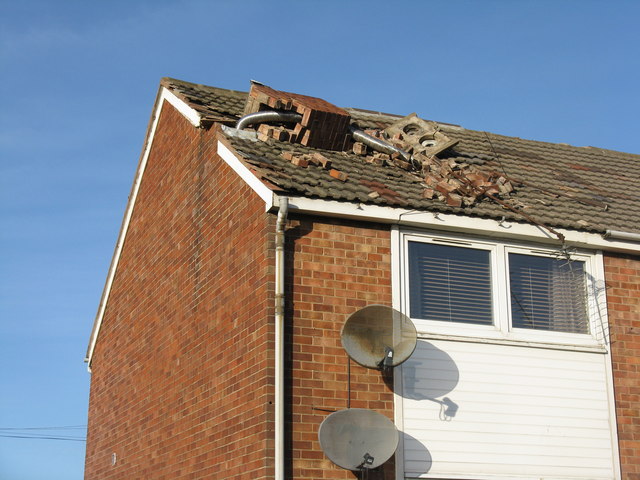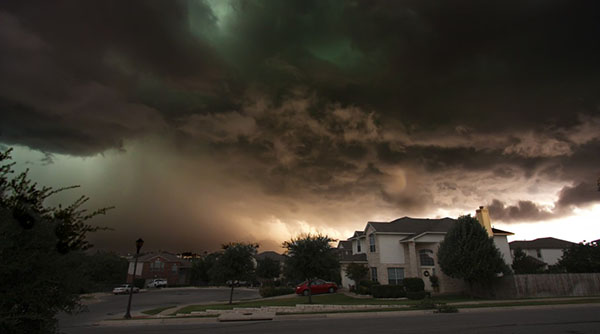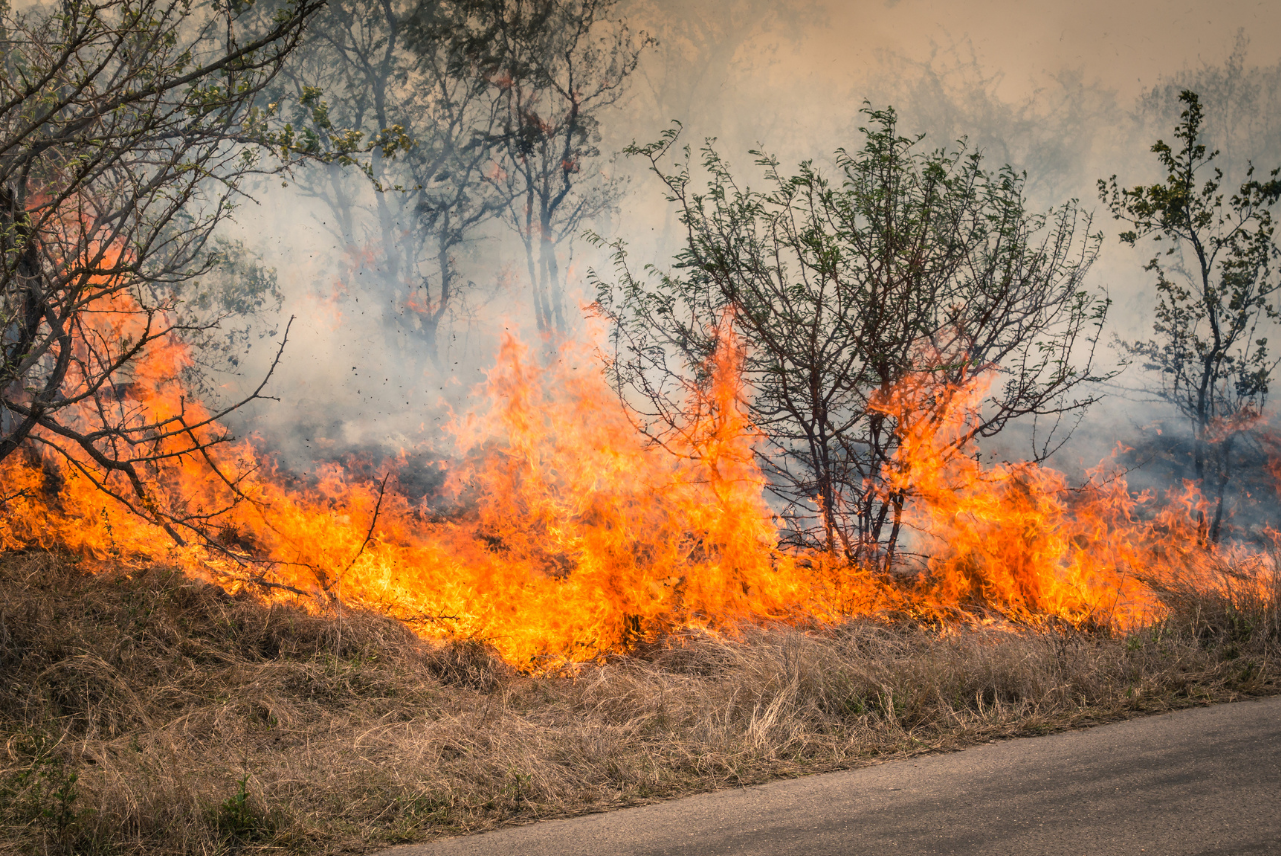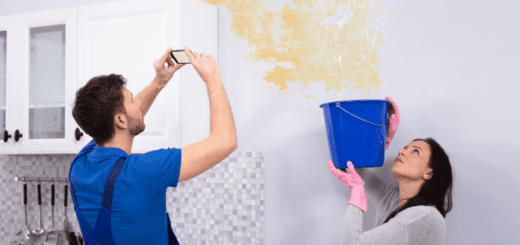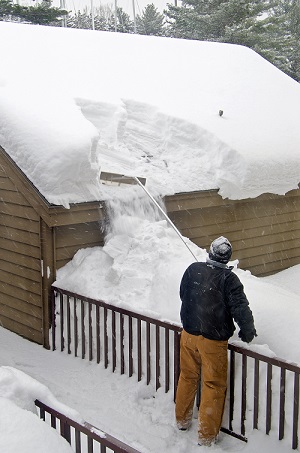How Plumbers Find Underground Water Leaks
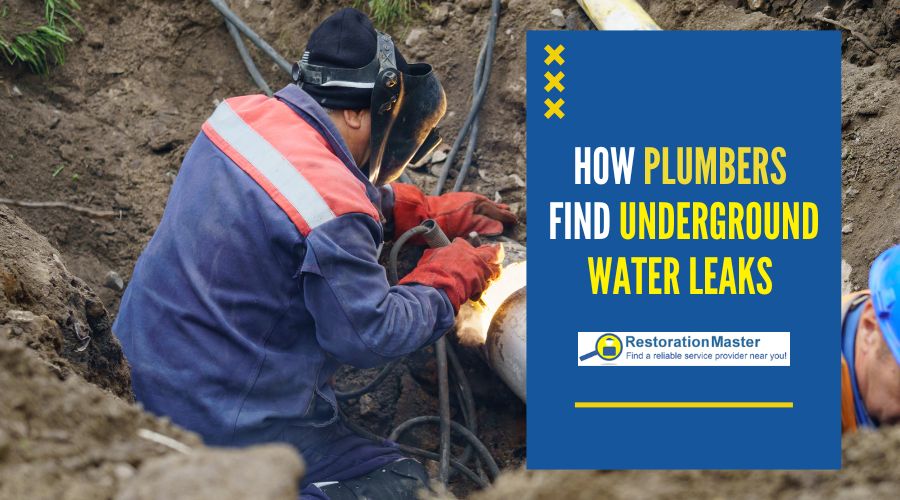
Underground pipes are essential for bringing water into our homes, but they can develop leaks over time due to wear and tear, rustRust is a reddish-brown oxide that forms on iron or steel du... More, or shifting ground. Unfortunately, these leaks often go unnoticed until they cause serious damage.
If you’ve ever seen your water bill unexpectedly spike or noticed strange smells around your property, you might have an underground leak. But how do plumbers find these hidden leaks without tearing up your entire yard? In this post, we’ll break down the common causes of underground water leaks and explore the tools and methods plumbers use to track them down and prevent further damage.
What Causes Underground Water Leaks?
Underground water leaks can happen for different reasons, and it’s important to recognize these factors to prevent and deal with water damage issues. Some typical causes include:
- Wear and Tear: Over time, underground pipes can experience wear and tear due to natural aging processes. Corrosion, erosion, and the gradual degradation of materials can weaken the integrity of pipes, leading to the development of leaks. This process is often accelerated by factors such as soil conditions, water chemistry, and the type of material used in the pipes.
- Improper Installation: Flaws like insufficient joint sealing, subpar welding, or misaligned pipes can result in underground water leaks. Adhering to industry standards during installation is essential to avoid these vulnerabilities.
- Chemical Corrosion: The presence of certain chemicals in the soil or water can accelerate corrosion and deterioration of pipe materials. For example, highly acidic or alkaline conditions can corrode metal pipes, leading to the formation of weak spots that eventually result in leaks.
- Freeze-Thaw Cycles: In regions with cold climates, freeze-thaw cycles can pose a significant risk to underground water infrastructure. When water within pipes freezes, it expands, putting pressure on the pipe walls. As the ice thaws, it may leave behind cracks or weaknesses in the pipe, ultimately leading to leaks.
- Ground Movement: Earthquakes, land subsidence, or other geological factors can cause shifts in the ground, putting stress on underground pipes. This movement can result in cracks, fractures, or misalignments in the piping system, ultimately leading to leaks.
- Trees: In some cases, when trees grow in close proximity to pipes, their roots can exert pressure, potentially leading to pipe damage and subsequent leaks.
Subtle Indicators of Underground Water Leaks
Spotting signs of an underground water leak is important for quick action and preventing possible harm. Keep an eye out for these common signals:
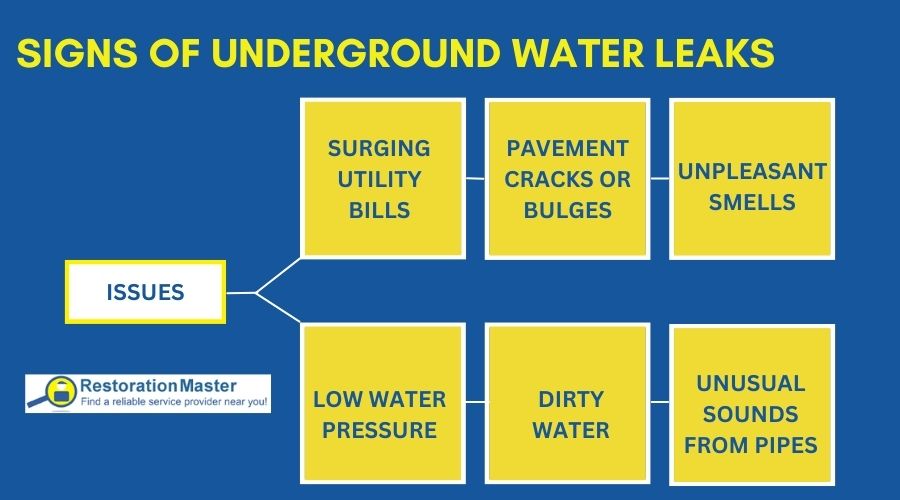
- Surging Utility Bills: Keep an eye on unexpected spikes in your water bills, as they could indicate a hidden underground leak, leading to wasteful water consumption.
- Pavement Cracks or Bulges: Visible changes in pavement, such as cracks or bulges, may signal water escaping from underground pipes, causing soil displacement and pavement damage.
- Unpleasant Smells: A distinctive musty or moldy odorAn odor is a smell, often detectable by the human nose, whic... More near your property might be a sign of an underground water leak, as water saturationSaturation is the point at which a material or environment c... More can create an environment conducive to bacterial growth.
- Low Pressure in the Water Supply: If you notice a significant drop in water pressure, it could be indicative of a leak, as the escaping water reduces the overall pressure within the system.
- Dirty Water: Discolored or murky water coming from taps may signal a leak, as soil and contaminants can enter the water supply through the compromised pipes.
- Unusual Sounds from Pipes: Gurgling, hissing, or running water sounds when no water is in use could indicate an underground leak. These sounds may result from water escaping and moving through the pipes.
Why We Need Plumbers To Detect Underground Water Leaks?
Plumbers are highly valuable when it comes to discovering underground water leaks. Their expertise and specialized tools allow them to identify issues without causing unnecessary damage. They can skillfully determine the reasons behind leaks, be it rustRust is a reddish-brown oxide that forms on iron or steel du... More, installation problems, or other factors. Early detection is essential to prevent water wastage and property damage. Additionally, plumbers contribute to ensuring compliance with building codes, conducting preventive maintenanceMaintenance is the routine care, inspection, and repair of a... More, and overseeing proper repairs.
How Do Plumbers Find Water Leaks?
Here’s an overview of how plumbers find underground water leaks:
- Acoustic Listening Devices: Plumbers use sophisticated acoustic equipment to listen for the sound of escaping water. This method is effective in identifying the location of leaks by detecting the distinct noises produced as water flows through pipes or escapes from compromised areas.
- Thermal Imaging: Thermal imaging cameras detect temperature variations in the ground caused by the presence of water. Plumbers can use these cameras to identify potential leaks by observing temperature differences, making it particularly useful for detecting hidden or underground leaks.
- Moisture Meters: Moisture meters are tools that measure the moisture contentMoisture content is the amount of water present in a materia... More in materials like walls or floors. Plumbers can use these meters to identify areas with higher moisture levels, which may indicate the presence of an underground water leak.
- Gas Tracing: Plumbers may introduce a specific gas into the water system. Using a gas detector on the surface, they can follow the path of the gas to identify the location of the leak.
- Dye Testing: In some cases, plumbers may introduce a non-toxic dye into the water supply. The dye can then be traced to the surface, helping plumbers identify the location of the leak visually.
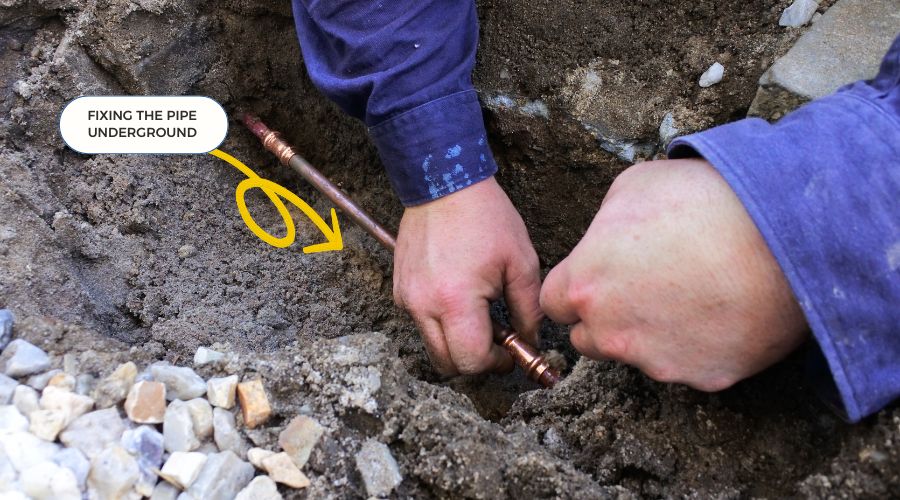
Water Damage Due to Underground Water Leaks
Underground water leaks can silently cause considerable harm to homes and businesses, presenting a less apparent yet significant danger. These leaks typically arise from deteriorating pipes or flawed plumbing systems beneath the surface, often escaping notice for extended periods and resulting in notable structural damage.
RestorationMaster is your reliable choice for expert water mitigation. Our seasoned team excels in handling water-related emergencies with a focus on comprehensive solutions for floods, leaks, and other water incidents. With advanced technology and industry-best practices, we ensure a methodical approach to mitigateTo mitigate is to reduce or limit the severity of damage, ri... More damage and restore properties to their pre-damage condition.
Contact us now for more information on water damage restoration.
Frequently Asked Questions
Are there any DIY methods for detecting an underground water leak?
While professional equipment is the most effective for detecting underground leaks, homeowners can try a few basic methods like turning off all water sources in the house and checking the water meter. If the meter continues to run, it suggests a leak somewhere in the system. However, it’s always best to consult a plumber for a precise diagnosis and repairRepair is the act of fixing or restoring damaged property, m... More.
Can underground water leaks affect my lawn or landscaping?
Underground leaks can negatively impact your lawn or landscaping. The constant water flow can cause the soil to erode, creating uneven areas, waterlogged patches, and unhealthy plant growth. If the leak is left untreated, it could also leadLead is a heavy metal that can be toxic to humans, especiall... More to pooling water, which can damage plants, kill grass, and potentially flood the area around your home’s foundation.
Can underground water leaks cause moldMold is a type of fungus that grows in damp or humid conditi... More or mildewMildew is a type of fungus that grows on damp surfaces, typi... More issues in my home?
Underground water leaks can definitely leadLead is a heavy metal that can be toxic to humans, especiall... More to moldMold is a type of fungus that grows in damp or humid conditi... More and mildewMildew is a type of fungus that grows on damp surfaces, typi... More problems in your home if not addressed quickly. When water leaks from underground pipes, it can seep into the surrounding soil and spread moisture to nearby areas like your foundation or basement. Over time, this moisture can build up inside the walls or floors, creating the perfect conditions for moldMold is a type of fungus that grows in damp or humid conditi... More and mildewMildew is a type of fungus that grows on damp surfaces, typi... More to grow. These fungiFungi are a group of organisms, including mold, mildew, and ... More thrive in damp, dark environments, and once they start spreading, they can reach other parts of your home, like the ceilings and floors.
How often should I have my underground pipes inspected?
It’s a good idea to have your underground pipes inspected every 2-3 years to ensure they are in good condition. This is especially important if you live in an older home or in an area with harsh weather conditions.

